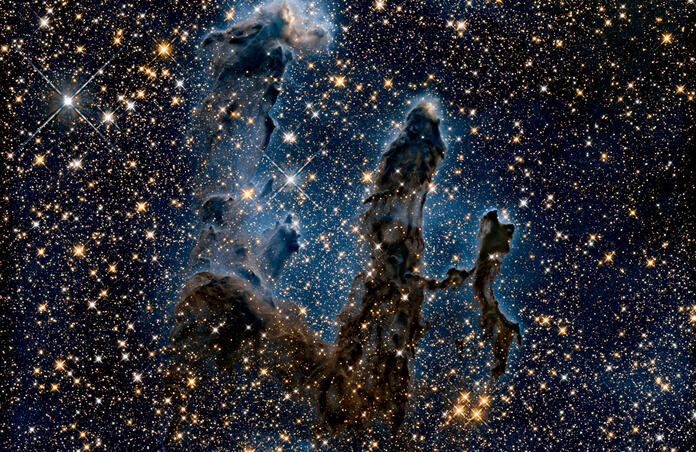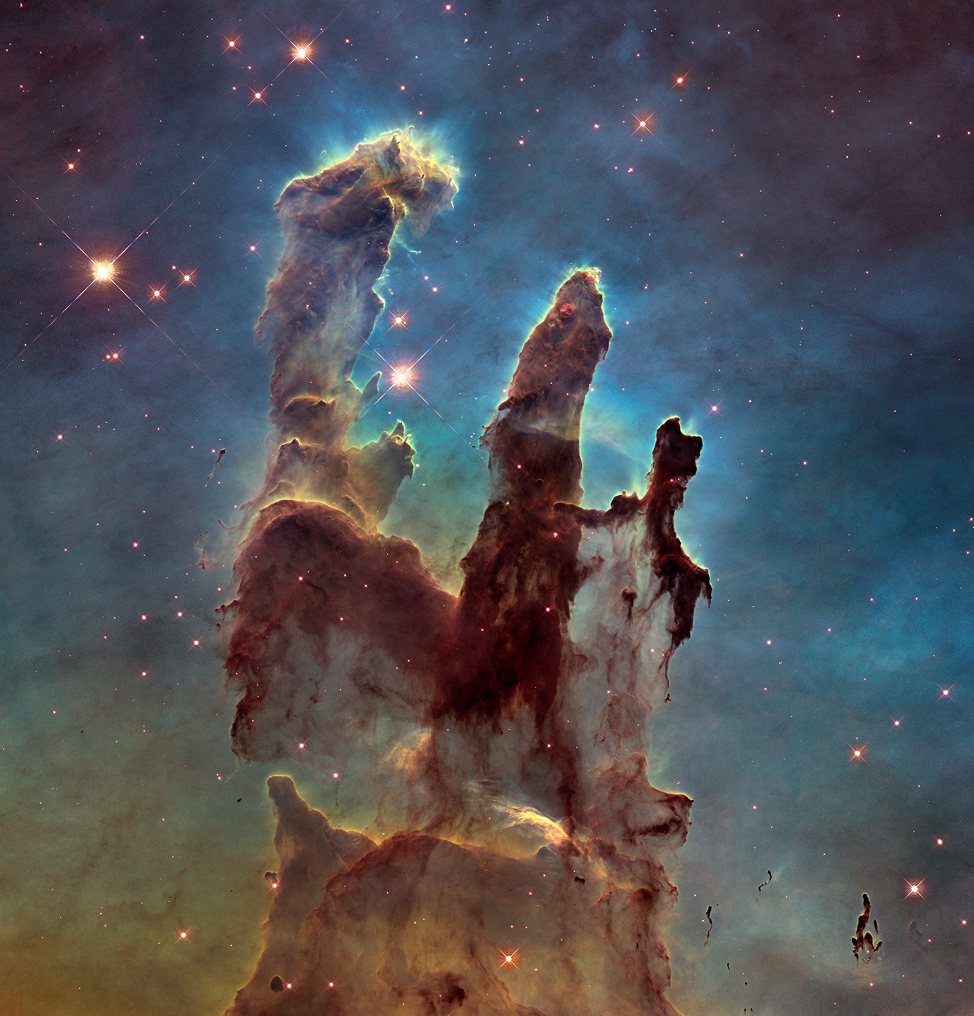Hubble Captures 'Pillars of Creation' in Stunning Infrared

The Eagle Nebula's 'Pillars of Creation' is one of the Hubble Space Telescope's most famous images, and NASA just reposted a stunning infrared version. Showcased as an ‘Image of the Day’ on April 6th (though initially released in 2015), the Eagle Nebula appears much differently than in its visible-light counterpart. The infrared capture effectively filters out any dust or gas obscuring the nebula, unveiling thousands of surrounding bright stars. A blue haze surrounds the pillars themselves, and they appear much more defined.



The Eagle Nebula was discovered in 1745 by the Swiss astronomer Jean-Philippe Loys de Cheseaux. It's about 7,000 light-years from Earth, located in the Serpens constellation. Though the Pillars of Creation are a prominent focal point, they only span about 4 to 5 light-years—the entire nebula is over 70 light-years across.